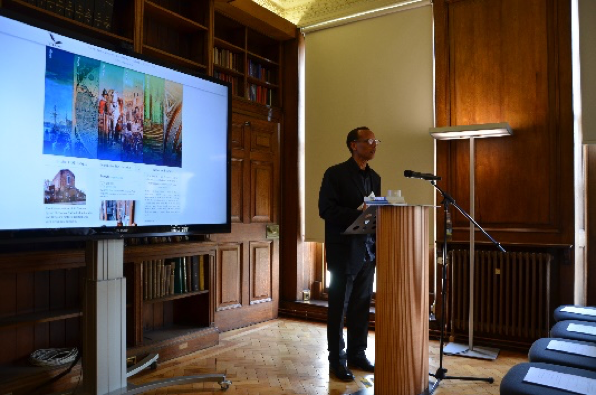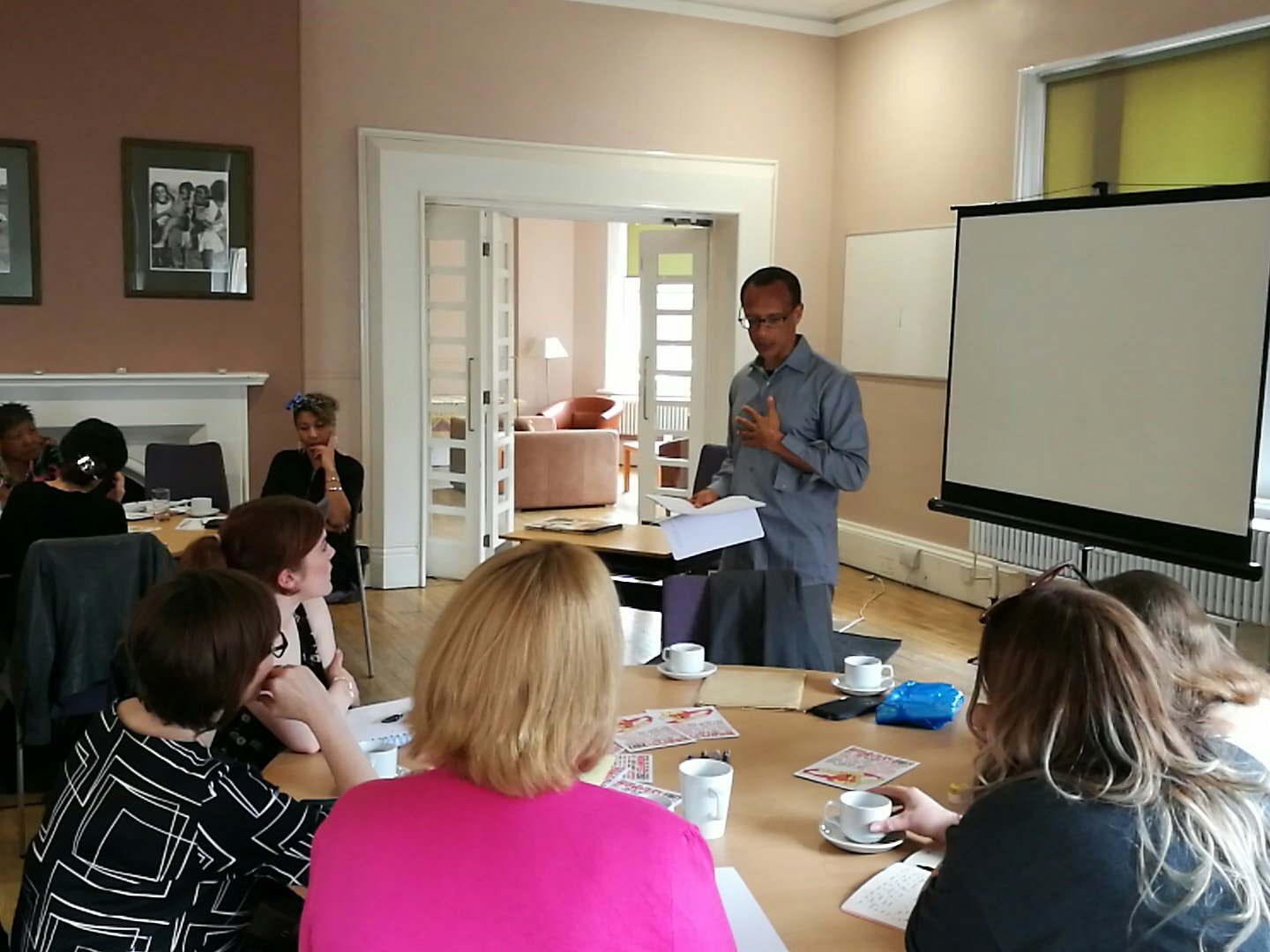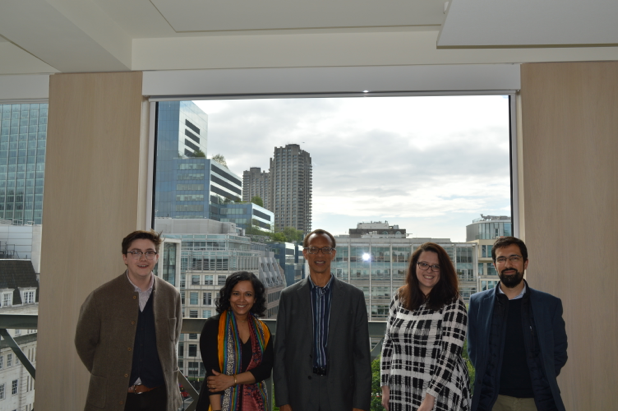
The archival spirit, the impulse and compulsion to dig deep into the past may as well be hardwired given its widespread practice and endurance through time. Even within ancient cultures deemed without libraries that predate big data there were symbols and oral rituals that paid homage to the past as a reliquary of wisdom. For example, the image of the Sankofa bird in Asante Adinkra in Ghana shows a bird that carries an egg on its back and has its head turned backwards as if to protect that egg and with a clear eye on the path behind it. Sankofa comes from the Twi language, and means “go back and get it” The image of the bird and the word function together as symbols with global applications.
Contemporary researchers of the Medieval and Early Modern eras, spared the burden of chaperoning eggs with them during the course of their research, nevertheless practice the same hindsight as that bird, the same looking back in order to understand the nature of one’s forward momentum. But in the case of a history of fragments, where the references are so scant they seem to be precursors of the art of minimalism, a degree of detective work of joining the dots and filling the large gaps appear to go hand-‐in-‐hand with the discovery of hidden gems in the past. It is not just a case of making things up. The links between two salient facts instruct the invention that tries credibly to bridge them.
In one instance, where a black woman is hanged in London, many questions arise about the brief reference to the simple fact that a black woman was hanged with nine others in seventeenth century London. It is not just a curious mind nosing around a fragment about a sad matter. Profound and glaring absences surround this woman’s life and brutal death, so much so that they become almost living themselves, bubbling at the site of this fragmentary reference. How did the black woman end up in London? What did she do to make the fledgling state of the day take her life from her? Was she a mother? Married? And so on.
Writers worth their salt see the fragment and feel, at an almost molecular level, a huge sense of outrage on behalf of that poor woman. The questions become an ethical commitment to her, close to a contract so it seems, to help fill in some of the questionnaire about her, even if invention and imagination must supplement the piecing together of those fragments and help to reanimate that lost life.

Simon Schama’s Dead Certainties (1991) shows us that where there is a gap between one fact and another some ingenuity is called for on the part of the researcher who must bridge that gap or abandon the project. The gap is a permission slip for the imagination to get to work and make it possible, by filling in the absence, for the researcher to carry on (and remain calm).
From Toni Morrison’s Playing in the Dark (1992) we learn that absences are not restricted to mimimalist documentation in history. She writes that black presences in literature are absent presences, a function of being there in the most scant detail in order to glorify whiteness and help white characters in fiction to become actualized (fully realized flesh and blood personas with an interior landscape to boot). Since Morrison’s example is contemporary it lends itself to what I can only call theoretical teleportation, to being applied to any period in any location.
Applied to that black woman who is hanged, it is possible to see her as an absent presence in need of the same imaginative largesse applied to globetrotting whites who benefited from their relations to servile and more stationary blacks. The move back in time to earlier and earlier emblems of black belonging works in exact opposition to claims that blacks do not belong in Britain or arrived there too recently to earn full participation in the civil and political economy.
Our (feeling for her, I cannot help being proprietorial) black woman is international in her body. Clearly from some other place and living in London, she signals that the British part of the transatlantic slave trade may have left large numbers of blacks in the cities and before that trade, it implies that mercantile capital had its black subjects popping up in far flung places as well.
At a genealogical level, were she a mother, we can assume that she left a genetic trail in the city with descendants who have blended into the general populace. She scratched about for a living or she may have had a trade of some kind, who knows? A fiction writer might be able to tell at least one likely trajectory for a black woman in the seventeenth century. She needs a name, an imagined biography and dreams, as counters to her sliver of a record for a life.
Liverpool’s archive goes further, earlier, deeper and more broadly than individual characters. Cartographies, European and global trade routes, ever-‐burgeoning cities, New World epistemologies, and the roots in antiquity of our modernity, comprise some of the projects flourishing there. Other Liverpool University Depart of English faculty who are involved are the writers and researchers, Sandeep Parmar, Deryn Rees-‐Jones and Lucienne Loh.

I was lucky to enjoy a short residency in the city of Liverpool and make use of the facilities of the university. That TIDE is based in the School of the Arts points to the importance of deep research for critical thinking and for the arts of the imagination and belies its many connections to the community. I visited the Slave Museum at the thriving docks, met local writers, David Byrne, Levi Tafari, and many activists at a May Day parade. I conducted a writing workshop as part of the Writing on the Wall Liverpool festival, organized by Madeline Heneghan and Mike Morris. (You won’t meet two souls more committed to the health of the city than Madeline and Mike.) The workshop consisted of a series of writing exercises built around a selection of entries in church registers and other public notices from the sixteenth and seventeenth centuries.
For the Miriam Allott lecture, I read and answered questions at a public event held at the university. In TIDE’s small but vibrant office, a tight ship me-‐maties, aarrh, (I channel a pirate) run by Emma-Louise Whitehead, I had many conversations with TIDE’s three young scholars, Haig Smith, Jõao Vincente Melo, and Lauren Working, and research associate, Roger Christofides, all under the expert tutelage of Nandini Das, project director.
The visit culminated with a discussion at the LRB Bookshop across from the British Museum between broadcaster and historian, David Olusoga, the novelist and historian Catherine Fletcher and me, with Nandini Das as Chair. Here, the talk and Q&A. with the audience forged links with an antique and with an Early Modern past in confirmation of what Faulkner said about history – “the past is never past.”
Fred D’Aguiar






